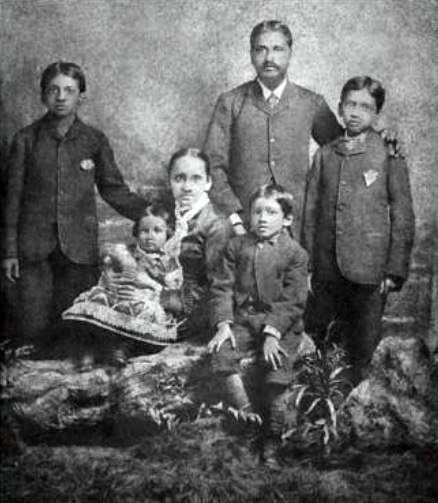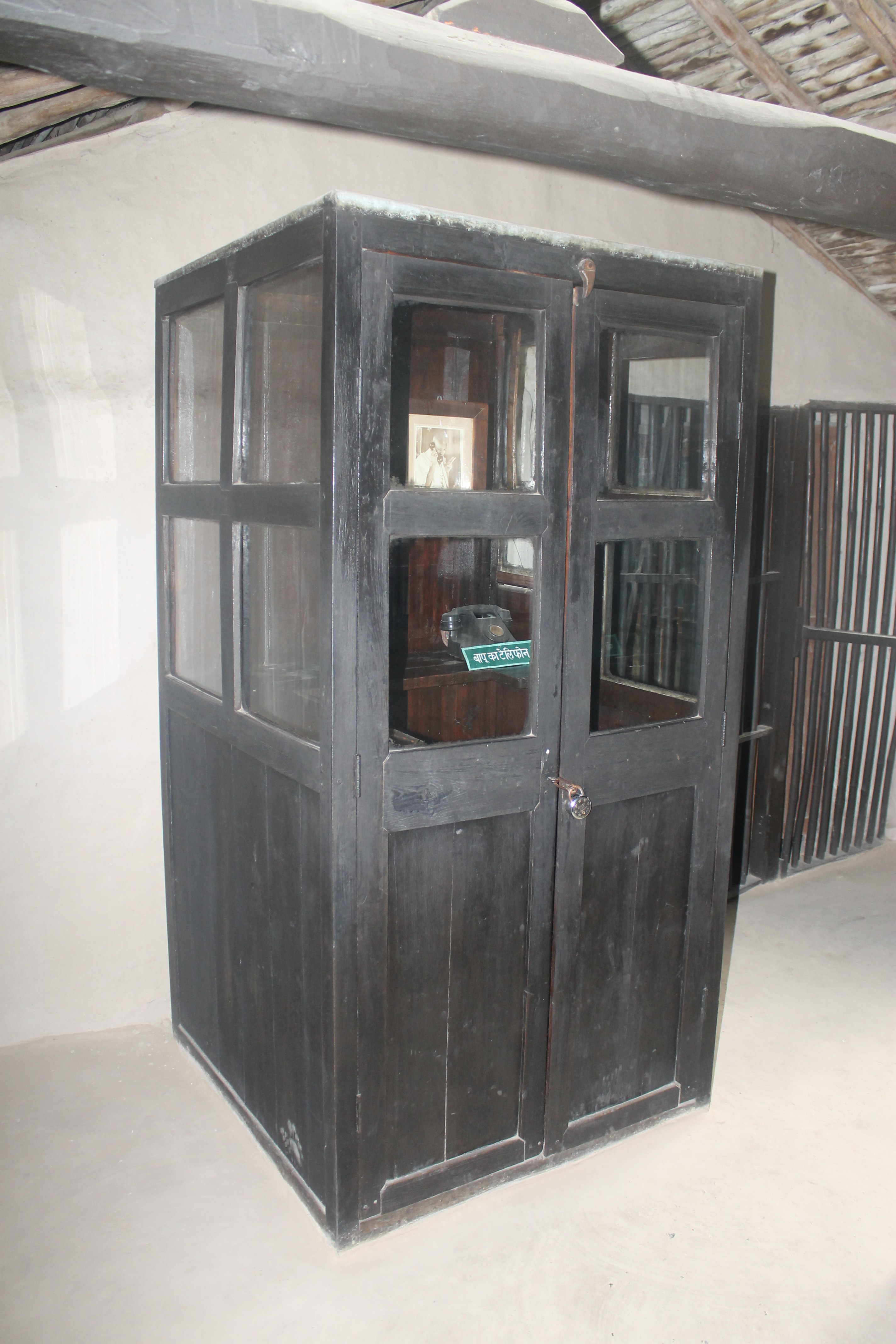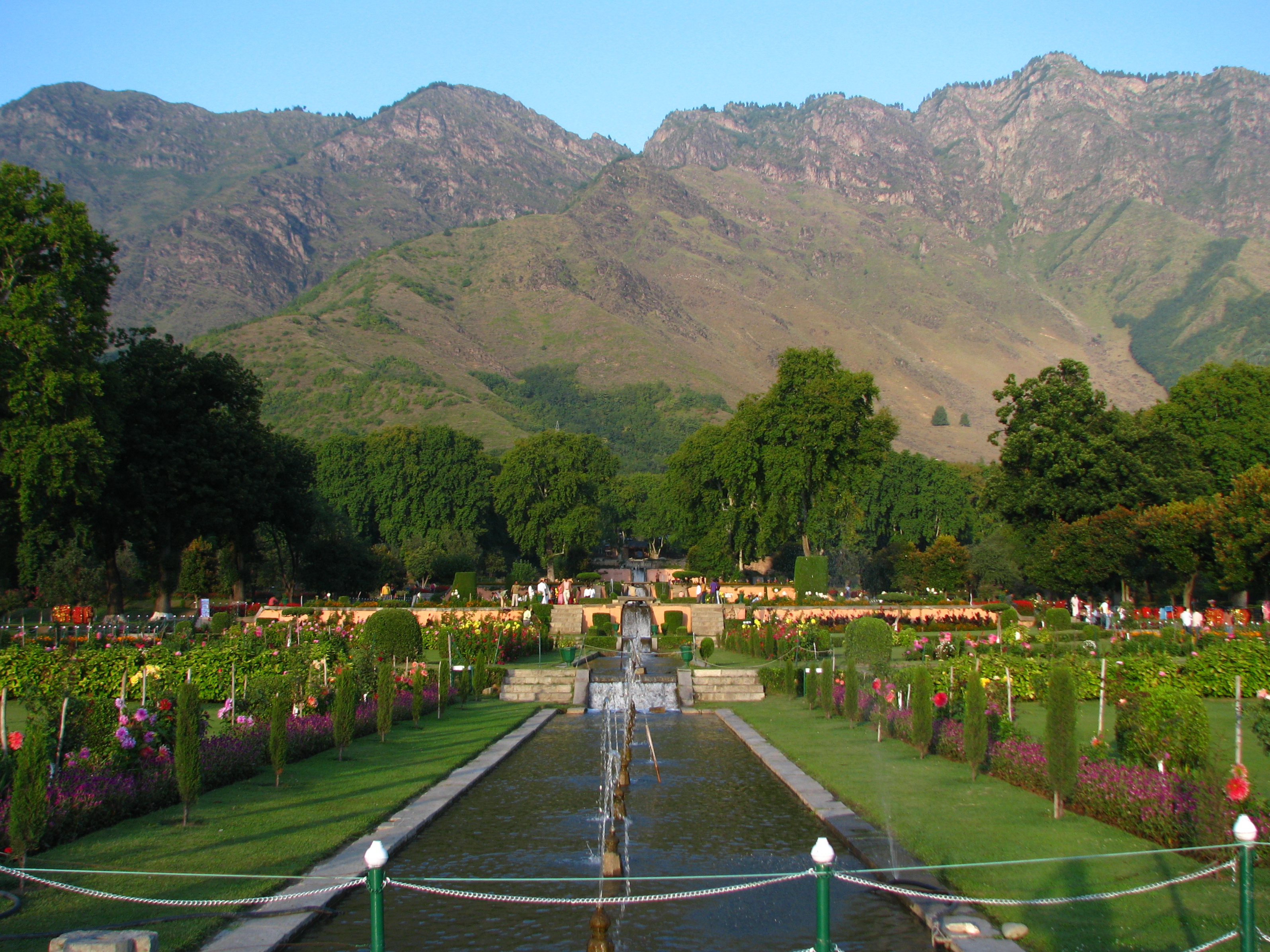|
Lakshman Joo
Swami Lakshman Joo (9 May 1907 – 27 September 1991) was a mysticism, mystic and scholar of Kashmir Shaivism. He was known as Lal Sahib ("Friend of God") by followers. Biography Lakshman Joo was born in a Kashmiri Hindu Brahmin family in the city of Srinagar in Kashmir. He was the fifth child in a household of four boys and five girls. His father, Narayandas ("Nav Narayan") Raina, was the first person to have introduced houseboats in the Kashmir Valley. His mother's name was Arnyamali Raina. At the age of five he was introduced to the path of spirituality by his elder brother Maheshvaranath. Up to the age of eight his spiritual progress in the lineage of Kashmir Shaivism, Kashmiri Shaivam was monitored by his family priest, Pandit Swami Ram Joo (1854-1915), and later by his chief disciple Swami Mehatab Kak (1870?-1942). At the age of 19, it is said, he experienced a clear taste of Self-realisation. Shortly afterwards he left home, as he wrote, "in search of the Supreme ... [...More Info...] [...Related Items...] OR: [Wikipedia] [Google] [Baidu] |
Srinagar
Srinagar (English: , ) is the largest city and the summer capital of Jammu and Kashmir, India. It lies in the Kashmir Valley on the banks of the Jhelum River, a tributary of the Indus, and Dal and Anchar lakes. The city is known for its natural environment, gardens, waterfronts and houseboats. It is known for traditional Kashmiri handicrafts like the Kashmir shawl (made of pashmina and cashmere wool), and also dried fruits. It is the 31st-most populous city in India, the northernmost city in India to have over one million people, and the second-largest metropolitan area in the Himalayas (after Kathmandu, Nepal). Origin of name The earliest records, such as Kalhana's '' Rajatarangini'', mentions the Sanskrit name ''shri-nagara'' which have been interpreted distinctively by scholars in two ways: one being ''sūrya-nagar'', meaning "''City of the Surya''" (trans) ''"City of Sun''" and other being ''"The city of "Shri''" (श्री), the Hindu goddess of wealth, m ... [...More Info...] [...Related Items...] OR: [Wikipedia] [Google] [Baidu] |
Sanskrit
Sanskrit (; attributively , ; nominally , , ) is a classical language belonging to the Indo-Aryan branch of the Indo-European languages. It arose in South Asia after its predecessor languages had diffused there from the northwest in the late Bronze Age. Sanskrit is the sacred language of Hinduism, the language of classical Hindu philosophy, and of historical texts of Buddhism and Jainism. It was a link language in ancient and medieval South Asia, and upon transmission of Hindu and Buddhist culture to Southeast Asia, East Asia and Central Asia in the early medieval era, it became a language of religion and high culture, and of the political elites in some of these regions. As a result, Sanskrit had a lasting impact on the languages of South Asia, Southeast Asia and East Asia, especially in their formal and learned vocabularies. Sanskrit generally connotes several Old Indo-Aryan language varieties. The most archaic of these is the Vedic Sanskrit found in the Rig Veda, a colle ... [...More Info...] [...Related Items...] OR: [Wikipedia] [Google] [Baidu] |
Meher Baba
Meher Baba (born Merwan Sheriar Irani; 25 February 1894 – 31 January 1969) was an Indian spiritual master who said he was the Avatar, or God in human form, of the age. A major spiritual figure of the 20th century, he had a following of hundreds of thousands of people, mostly in India, but with a significant number in the United States, Europe and Australia. Meher Baba's map of consciousness has been described as "a unique amalgam of Sufi, Vedic, and Yogic terminology". He taught that the goal of all beings was to gain consciousness of their own divinity, and to realise the absolute oneness of God. At the age of 19, Meher Baba began a seven-year period of spiritual transformation, during which he had encounters with Hazrat Babajan, Upasni Maharaj, Sai Baba of Shirdi, Tajuddin Baba, and Narayan Maharaj. In 1925, he began a 44-year period of observed silence, during which he communicated first using an alphabet board, and by 1954, entirely through hand gestures using ... [...More Info...] [...Related Items...] OR: [Wikipedia] [Google] [Baidu] |
Ramana Maharshi
Ramana Maharshi (; 30 December 1879 – 14 April 1950) was an Indian Hindu sage and '' jivanmukta'' (liberated being). He was born Venkataraman Iyer, but is mostly known by the name Bhagavan Sri Ramana Maharshi. He was born in Tiruchuli, Tamil Nadu, India. In 1895, an attraction to the sacred hill Arunachala and the 63 Nayanmars was aroused in him, and in 1896, at the age of 16, he had a "death-experience" where he became aware of a "current" or "force" (''avesam'') which he recognized as his true "I" or "self",David godman (7 May 2008), ''Bhagavan's death experience'' The Mountain Path, 1981, pp. 67–69. and which he later identified with "the personal God, or |
Tiruvannamalai
Tiruvannamalai ( Tamil: ''Tiruvaṇṇāmalai'' IPA: , otherwise spelt ''Thiruvannamalai''; ''Trinomali'' or ''Trinomalee'' on British records) is a city, a spiritual, cultural, economic hub and also the administrative headquarters of Tiruvannamalai District in the Indian state of Tamil Nadu. The city is home to the renowned ''Annamalaiyar temple'''', Annamalai hill, Girivalam'' and the ''Karthigai deepam'' festival. Being a prominent tourist destination which attracts considerable foreign visitors. The city is one of the cities featured in lonely planet. the city has a thriving service sector industry including retail, resorts and recreation activities. Apart from the service sector, the city is also the hub for many industrial setups including '' SIDCO'', spinning mills and premier educational institutions. The city is administered by the Tiruvanamalai Municipality, originally constituted in the year 1886. The city has a good network of roadways and railways and a popular g ... [...More Info...] [...Related Items...] OR: [Wikipedia] [Google] [Baidu] |
Pondicherry
Pondicherry (), now known as Puducherry ( French: Pondichéry ʊdʊˈtʃɛɹi(listen), on-dicherry, is the capital and the most populous city of the Union Territory of Puducherry in India. The city is in the Puducherry district on the southeast coast of India and is surrounded by Bay of Bengal to the east and the state of Tamil Nadu, with which it shares most of its culture, heritage, and language. History Puducherry, formerly known as Pondicherry, gained its significance as “The French Riviera of the East” after the advent of the French colonialization in India. Puducherry is the Tamil interpretation of “new town” and mainly derived from “Poduke”, the name of the marketplace as the “Port town” for Roman trading in 1st century as mentioned in ‘The Periplus of the Erythraean Sea’. The settlement was once an abode of many learned scholars as evidently versed in the Vedas, hence also known as Vedapuri. The history of Puducherry can broadly be classified ... [...More Info...] [...Related Items...] OR: [Wikipedia] [Google] [Baidu] |
Sri Aurobindo
Sri Aurobindo (born Aurobindo Ghose; 15 August 1872 – 5 December 1950) was an Indian philosopher, yogi, maharishi, poet, and Indian nationalist. He was also a journalist, editing newspapers such as ''Vande Mataram''. He joined the Indian movement for independence from British colonial rule, until 1910 was one of its influential leaders, and then became a spiritual reformer, introducing his visions on human progress and spiritual evolution. Aurobindo studied for the Indian Civil Service at King's College, Cambridge, England. After returning to India he took up various civil service works under the Maharaja of the Princely state of Baroda and became increasingly involved in nationalist politics in the Indian National Congress and the nascent revolutionary movement in Bengal with the Anushilan Samiti. He was arrested in the aftermath of a number of bombings linked to his organization in a public trial where he faced charges of treason for Alipore Conspiracy. Howev ... [...More Info...] [...Related Items...] OR: [Wikipedia] [Google] [Baidu] |
Sevagram
Sevagram (meaning "A town for/of service") is a town in the state of Maharashtra, India. It was the place of Mahatma Gandhi's ashram and his residence from 1936 to his death in 1948. After Sabarmati, Sevagram Ashram holds immense importance due to the residence of Mahatma Gandhi. Overview Sevagram, originally Segaon, is a small village, located about 8 km from Wardha. Gandhi set up what eventually became an ashram in the outskirts of the village. Seth Jamnalal Bajaj of Wardha, a disciple of Gandhi, made available to the ashram about 300 acres (1.2 km2) of land. Near the ashram there is a museum where artifacts of India's freedom struggle are preserved. History When Gandhi started his padayatra (foot march) in 1930 from Sabarmati Ashram to Ahmedabad for the Salt Satyagraha, he decided not to return to Sabarmati till India achieved independence. Gandhi was imprisoned for more than two years. On his release he spent sometime travelling around India. He decided ... [...More Info...] [...Related Items...] OR: [Wikipedia] [Google] [Baidu] |
Mahatma Gandhi
Mohandas Karamchand Gandhi (; ; 2 October 1869 – 30 January 1948), popularly known as Mahatma Gandhi, was an Indian lawyer, anti-colonial nationalist Quote: "... marks Gandhi as a hybrid cosmopolitan figure who transformed ... anti-colonial nationalist politics in the twentieth-century in ways that neither indigenous nor westernized Indian nationalists could." and political ethicist Quote: "Gandhi staked his reputation as an original political thinker on this specific issue. Hitherto, violence had been used in the name of political rights, such as in street riots, regicide, or armed revolutions. Gandhi believes there is a better way of securing political rights, that of nonviolence, and that this new way marks an advance in political ethics." who employed nonviolent resistance to lead the successful campaign for India's independence from British rule, and to later inspire movements for civil rights and freedom across the world. The honorific '' Mahātmā'' (Sanskr ... [...More Info...] [...Related Items...] OR: [Wikipedia] [Google] [Baidu] |
Mumbai
Mumbai (, ; also known as Bombay — List of renamed Indian cities and states#Maharashtra, the official name until 1995) is the capital city of the Indian States and union territories of India, state of Maharashtra and the ''de facto'' financial centre of India. According to the United Nations, as of 2018, Mumbai is the List of cities in India by population, second-most populous city in India after Delhi and the List of largest cities, eighth-most populous city in the world with a population of roughly 20 million (2 crore). As per the Indian government population census of 2011, Mumbai was the list of cities in India by population, most populous city in India with an estimated city proper population of 12.5 million (1.25 crore) living under the Municipal Corporation of Greater Mumbai, Brihanmumbai Municipal Corporation. Mumbai is the centre of the Mumbai Metropolitan Region, the sixth most populous metropolitan area in the world with a population of over 23 million ... [...More Info...] [...Related Items...] OR: [Wikipedia] [Google] [Baidu] |
Nishat Gardens
Nishat Bagh () is a terraced Mughal garden built on the eastern side of the Dal Lake, close to Srinagar in the union territory of Jammu and Kashmir, India. It is the second largest Mughal garden in the Kashmir Valley. Nishat Bagh, is also located on the bank of the Dal Lake. ‘Nishat Bagh’ is Urdu, and means the "Garden of Joy," "Garden of Gladness" and "Garden of Delight." History Located on the bank of the Dal Lake, with the Zabarwan Mountains as its backdrop, Nishat Bagh is a garden with views of the lake beneath the Pir Panjal mountain range. The Bagh was designed and built in 1633 by Asif Khan, elder brother of Nur Jahan. An anecdote is told of the jealousy of the Emperor Shah Jahan on beholding such a delightful garden, which led to the abandonment of the garden for some time. When Shah Jahan saw the garden, after its completion in 1633, he expressed great appreciation of its grandeur and beauty. He is believed to have expressed his delight three times to Asif ... [...More Info...] [...Related Items...] OR: [Wikipedia] [Google] [Baidu] |
Dal Lake
Dal is a lake in Srinagar, the summer capital of Jammu and Kashmir. It is an urban lake, the second largest lake in Jammu and Kashmir, and the most visited place in Srinagar by tourists and locals. It is integral to tourism and recreation in the Kashmir valley and is variously known as the "Lake of Flowers", "Jewel in the crown of Kashmir" or "Srinagar's Jewel". The lake is also an important source for commercial operations in fishing and water plant harvesting.Pandit pp. 66–93 The shore line of the lake, about , is encompassed by a boulevard lined with Mughal era gardens, parks, houseboats and hotels. Scenic views of the lake can be witnessed from the shore line Mughal gardens, such as Shalimar Bagh and Nishat Bagh built during the reign of Mughal Emperor Jahangir, and from houseboats cruising along the lake in the colourful shikaras. During the winter season, the temperature can sometimes reach as low as , freezing the lake. The lake covers an area of and is part of a n ... [...More Info...] [...Related Items...] OR: [Wikipedia] [Google] [Baidu] |











